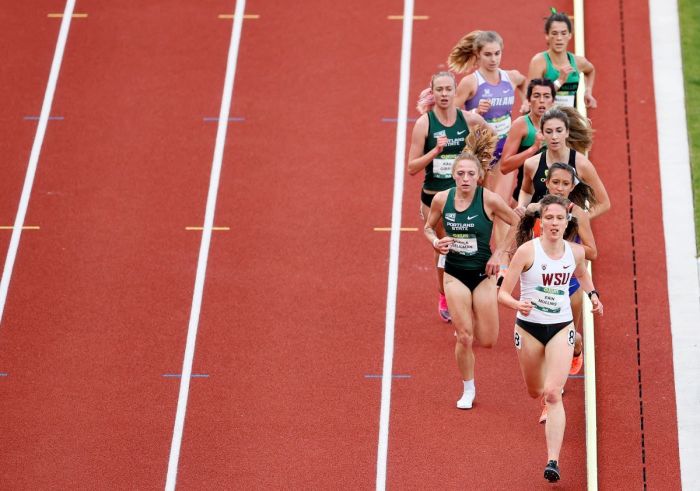
National Collegiate Athletics Association has unveiled a new policy prohibiting trans-identified male athletes from competing in women’s sports amid the Trump administration’s crackdown on gender ideology.
NCAA, a major organization that oversees collegiate athletics in the United States, announced in a statement Thursday that it is changing its participation policy for trans-identified student-athletes. The move follows President Donald Trump’s new executive order vowing to cut off federal funds to schools that allow males who identify as female to participate on women’s sports teams.
The new policy prohibits males from competing in women’s sports.
“The NCAA is an organization made up of 1,100 colleges and universities in all 50 states that collectively enroll more than 530,000 student-athletes. We strongly believe that clear, consistent, and uniform eligibility standards would best serve today’s student-athletes instead of a patchwork of conflicting state laws and court decisions,” said NCAA President Charlie Baker. “To that end, President Trump’s order provides a clear, national standard.”
While the new NCAA policy prohibits trans-identified males from competing on women’s sports teams, male athletes are permitted to practice on women’s sports teams.
Trump’s order and the NCAA’s new policy come amid concerns that allowing males to compete on women’s sports teams puts female athletes at a disadvantage due to the biological differences between men and women that give males, on average, an edge in sports.
USA Powerlifting, which implemented a policy requiring athletes to compete based on their biological sex as opposed to their stated gender identity, identified “increased body and muscle mass, bone density, bone structure, and connective tissue” as factors that give males an advantage over females in athletics.
Concerns about fairness for female athletes have been amplified by real-world examples of male athletes dominating women’s sports. One such incident involved Lia (Will) Thomas, a male athlete who broke women’s swimming records after competing on the University of Pennsylvania women’s swimming team following three seasons of competition on the men’s team.
A report from the United Nations Special Rapporteur on Violence Against Women and Girls found that as of March 2024, “over 600 female athletes in more than 400 competitions have lost more than 890 medals in 29 different sports” because of males competing in women’s sports. The NCAA’s new policy means that most female collegiate athletes in all 50 states will no longer have to compete against male athletes.
Just over half of states have laws on the books that prohibit male athletes from competing in women’s sports at the K-12 level.
The Trump administration’s commitment to abandon gender ideology is documented in an executive order issued on the first day of the Trump presidency.
The executive order, titled “Defending Women from Gender Ideology Extremism and Restoring Biological Truth to the Federal Government,” defined sex as “an individual’s immutable biological classification as either male or female.”
Stressing that sex “is not a synonym for and does not include the concept of ‘gender identity,'” the order defined “female” as “a person belonging, at conception, to the sex that produces the large reproductive cell” while describing a “male” as “a person belonging, at conception, to the sex that produces the small reproductive cell.”
Ryan Foley is a reporter for The Christian Post. He can be reached at: ryan.foley@christianpost.com









